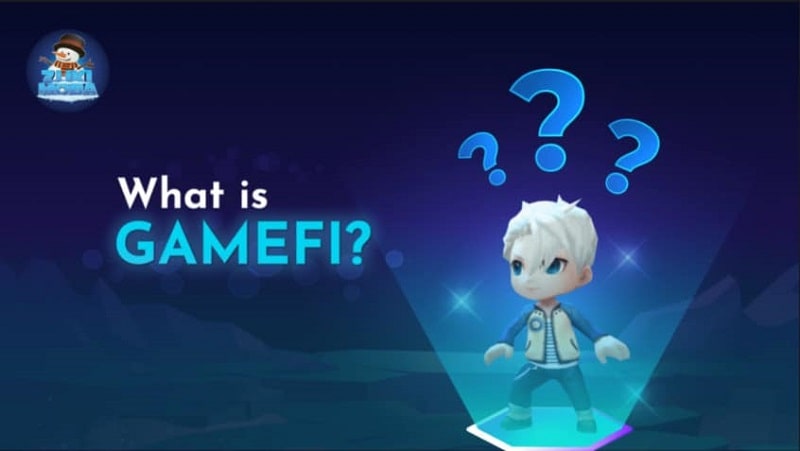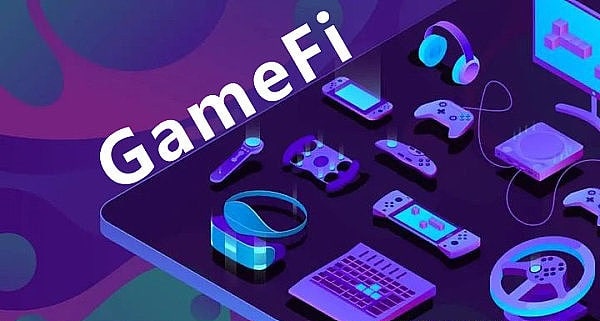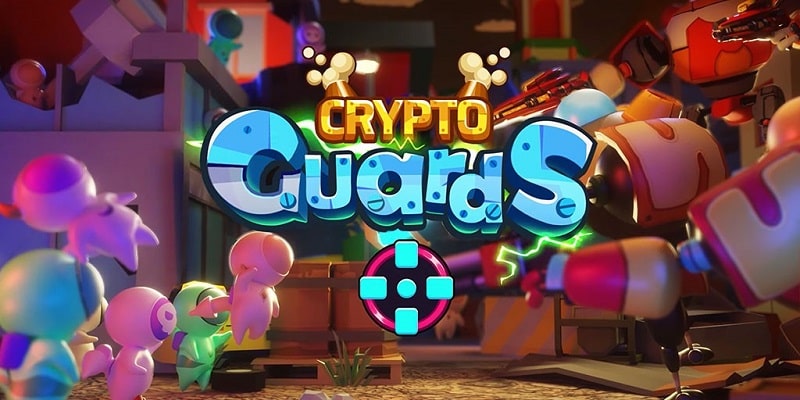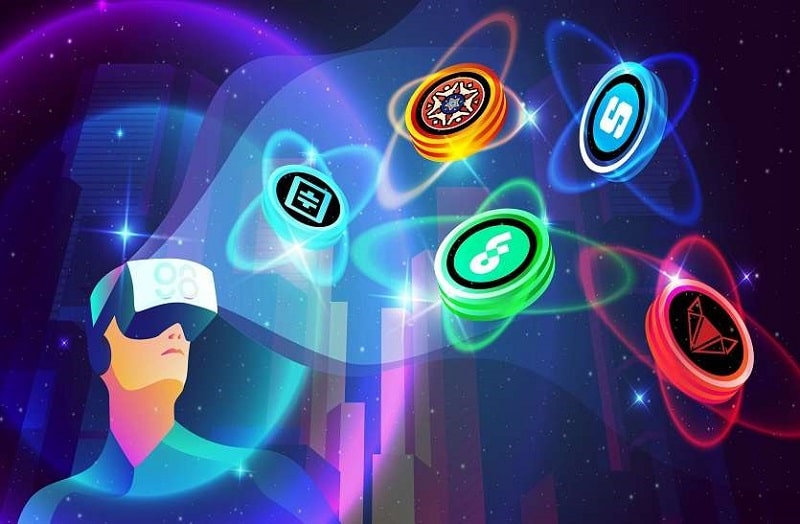What is GameFi? Learn about decentralized games

The term GameFi is one of the new terms these days that you will hear more as the game’s popularity grows. Many experts in the field of cryptocurrencies consider GameFi a new trend in the industry and believe that we will hear much more from it in the future.
You know, DeFi revolutionized traditional financial systems. Computer games and gaming, which have long been known as the entertainment industry revolution; Now GameFi has come to connect these two areas. According to experts, GameFi’s goal is to revolutionize the field of video games. The field of game is one of the most important and extensive sectors of technology, and the development in this broad field is a great revolution in the whole field of technology.
GameFi is the next generation of games and brings innovative and diverse experiences to users. This concept has recently become very popular in the gaming and blockchain industry. Traditional video game users who now have to pay to play online games are now attracted to blockchain video games; Because in this model, gamers can be rewarded for their time and effort and earn money at the same time as entertainment. The increase in popularity and revenue of games such as Axie Infinity in 2021 is proof of this claim.
In this article we will explain what GameFi is, how it works and what the future holds. In the end, we will introduce and review some of the top GameFi projects. Join us to get to know this new digital world better.
What is GameFi?
As we mentioned in the previous section, GameFi is a combination of the two words Game and DeFi; But the truth is that NFT tokens also play a big role in the gameFi functions.
So it’s more accurate to say that GameFi is made up of three major markets: blockchain games, decentralized finance (DeFi) and NFT.
The main purpose of the GameFi concept is to integrate financial systems into games with the aim of monetizing crypto-based games. This type of video games uses blockchain technology, which allows players to be the real and unique owner of their virtual elements in the game.
The blockchain has so far been able to show its power in changing the future to the world. This technology, along with decentralized finance (DeFi), has achieved the concept of GameFi and has become one of the most important revolutions in the field of technology, especially in the field of computer games.
The model of most traditional video games is “Winning Game”. In this game model, players have to pay a fee to get benefits such as reduced waiting time or the purchase of a virtual object; GameFi, on the other hand, introduces a “game for money” model to players. In this model, players earn money for their skills or the time they spend playing.
To better understand this, imagine the famous Monopoly game, which is played with real money instead of certain paper money that is only valuable within the game, and the ownership of its land plots is given to users in a real and verifiable way. This is what is happening in the world of blockchain video games.
Of course, the way to earn money in different blockchain games are different. Some of these games may reward players in return for completing the game, while others may make money through in-game assets; But in any case, the nature of all these games is the same in terms of offering users the opportunity to earn money.
History of GameFi
The origin of the word GameFi can be traced back to November 2019. This year, the co-founders of MixMarvel, a blockchain gaming platform, used the word gamefi for the first time in their speech at the World Blockchain Conference.
However, the most famous example of the use of the word GameFi, which received the most attention, was Andre Cronje’s tweet. Andre Cronje, founder of Yearn.finance, mentioned the term gamefi in a tweet in September 2020. Since then, “GameFi” has become a term used to describe games that have financial elements and use blockchain technology.
Although the term has recently become widely used, GameFi’s history goes back almost to Bitcoin itself. Early Minecraft servers that used bitcoin, Gambit.com, which has been running since 2013, titles such as Bombermine, and peer-to-peer services that allowed gamers to make money, are all signs. One of the first attempts is to move towards GameFi. Of course, the truth is that the evolution of the process of using this technology has brought us to the current GameFi.
How does GameFi work?

Different GameFi projects usually have a lot in common. For example, items within these games such as avatars, land, clothes, weapons, gold, tokens, and pets are usually presented in NFT format. You know that NFTs are the non-fungible tokens that prove ownership of these digital objects.
Players earn these tokens through the game and can trade them in the NFT markets. These NFTs can also be exchanged for other digital currencies, which in turn are exchanged for Fiat currency. Many of the most popular blockchain games today use a combination of the following features to monetize:
DeFi and GameFi
As mentioned in the previous sections, the blockchain, and in particular DeFi, is a platform for the development of GameFi technology. The combination of these two technologies has led to a revolution in the world of video games and the creation of a new world called Metaverse. Some forecasts suggest that by 2025, the market value of Metaverse will reach about $300 billion.
GameFi projects use DeFi capabilities to reward gamers and other features. Concepts such as profit cultivation, liquidity extraction and equity are familiar to anyone with experience working with DeFi. The same concepts can be used to make money from a blockchain game and to create a “game for money” model.
Earn money through games
In some blockchain games, players receive financial rewards for achieving the goals set in the game. In fact, the game model for monetization is the hallmark of successful GameFi projects. Funds donated in gaming models to earn money are usually withdrawn from the store of native tokens kept in a smart contract.
For example, in the popular Ethereum-based Axie Infinity game, a section of AXS tokens is dedicated to rewarding the following behaviors:
- Win battles and competitions
- Take care of other users’ land
- Trading in the Axie Infinity market
- Breeding and production of game creatures
Tokens like Axie have the ability to trade, buy and sell and become Fiat money out of the game.
Simply put, “Game for Money” model tokens are also valuable outside the gaming environment.
In contrast, there are traditional online games that make money through in-app purchases, affiliate marketing, and advertising. In traditional games, as a player, you spend money on in-game items to help you win or outperform other players. This cost goes directly to the game developers.
If you are one of the players in these games, you know that the player is somehow used to buying attractive coins in the game. However, these coins have no value outside the gaming environment. The truth is that for the time and effort you put into playing these online games, you get nothing but fun.
Asset ownership
The general concept and purpose of many current blockchain games is the ownership of scarce digital assets. Bitcoin introduced the phenomenon of scarcity of digital works through the blockchain, and NFT technology was developed based on it. NFTs can prove ownership of all types of assets in the game, both digital and physical.
Digital ownership of unique assets creates new economic opportunities for users. For example, in cryptocurrency or Axie Infinity, players can cultivate two creatures represented by NFTs and create a third creature.
They can then use these new assets to use more features in the game, sell them or rent them out for other gamers to use, and distribute the revenue generated between owners and borrowers.
These online virtual worlds allow their residents to make money from their time and through property ownership. Owners of assets such as plots of land in a game like Disneyland can earn money from their property in the same way as the physical world. In addition to selling the land they own directly, players can create attractions that may be lucrative.
Interestingly, these new virtual worlds are evolving the world of economics in the same way. Some even estimate that the “Metaverse economy” ultimately surpasses the real world; Because over time, people are increasingly taking advantage of the new benefits offered by these virtual worlds.
What will be the future of GameFi?

GameFi projects have been in the spotlight of users and investors in this field for months. The growing popularity of the concept of Metaverse and digital currencies is helping to restart an industry that has already had a very significant value and contribution to technology.
The best way to understand GameFi’s future is to analyze the evolution of existing projects such as Axie Infinity. Axie Infinity was priced at €0.12 and today is priced at around €125.
MetaSoccer, a football tournament in Metaverse, has raised more than $2 million so far, even though it has not been released yet. Fold company has announced a partnership to develop an augmented reality video game that will allow players to earn bitcoins. Fold AR will be a Pokémon-style game designed to receive digital currencies in-game.
The technology behind blockchain games has advanced to the point that new GameFi projects are gaining traction and can also attract large institutional investors. Experts in the field of technology believe that the most likely tools for the widespread acceptance and use of blockchain technology are these blockchain games. GameFi projects are not only gaining position among traditional gamers, but are also raising awareness of cryptocurrencies among the general public.
In short, given the success of Axie Infinity and other blockchain games currently being developed on various protocols, it is clear that GameFi has a bright future ahead.
The best GameFi projects
Although the first GameFi projects used the Bitcoin blockchain, most modern blockchain games can now be found on networks that support smart contract technology.
Atrium was the first China blockchain to introduce smart contract technology and remains the most popular option for developers and gamers; But as the number of such networks grows, so does the range of developer choices. Any blockchain network capable of supporting smart contracts will also be able to support gamefi projects.
Many big brands have now embraced this new space and many others have been attracted to it and do not want to lag behind. As the GameFi space expands, we can see more large projects being invested in this digital space. With this in mind, we will take a look at some interesting projects in the field of GameFi.
Enjin
The Enjin platform did not start as a crypto project, but as a mass gaming platform. The goal of this team was to create a platform where the user is the main owner of their assets. We said that in focused games, the player will not own the assets he has earned. This platform made real ownership possible for its users by decentralizing the game and using NFTs. In 2017, the Enjin launched its own token called Enjin coin (ENJ) and launched its first coin.
The Enjin coin is a native token platform for trading in the ENJ symbol, designed in the Ethereum network as an ERC-20 token. The Enjin platform offers a variety of ways to create digital assets in the form of unique tokens. These digital assets can be used as collections and assets in video games.
The main goal of this project is to create a set of tools that allow developers to create and manage virtual items. As a result, any developer can create their own digital currency or NFT product with relative ease. Creating any blockchain assets on the Enjin platform requires paying ENJ coins.
Decentraland
Decentraland is a virtual world run by users. Every piece of land and every element in this virtual world is an NFT. Decentraland had an average of 1,500 daily active users in early 2021, up from 10,000 a day in March.
MANA and LAND tokens are native tokens of this platform. These tokens are essential for the functioning of the ecosystem and are used to create programs, games, 3D scenes and more. The number of LAND tokens is limited to 90,000 tokens. MANA is a token with the ERC-20 standard, and LANDs are NFT tokens, or ERC-721 standard tokens, that represent a plots of land.
Today, this network continues to expand with progress at various levels. This expansion includes the creation of avatars, improved mapping tools, land auctions and more. Decentraland has already signed a number of partnerships with other projects, including Aragon, district0x and imToken.
Sandbox
The Sandbox is a Metaverse in which players can play, build buildings, own assets, and monetize their virtual experiences. SAND, the platform’s native token, is used throughout the sandbox ecosystem as a basis for a variety of interactions and transactions.
Sandbox became more famous for its impressive success in the field of mobile. The Sandbox games in 2011 and The Sandbox Evolution games were recognized in 2011 and have been downloaded a total of 40 million times on Android and iOS operating systems. In 2018, Pixowl decided to transfer the IP of this successful game to the blockchain environment.
The Sandbox platform consists of three main game products: VoxEdit software, Sandbox Marketplace and Sandbox Game Maker software.
GALA
GALA Games is a blockchain-based gaming platform based on Ethereum. In addition to playing games, users can buy, trade and sell their in-game collections as a token.
The platform’s native digital currency, called GALA, is given to players as a reward. The value of the Gala has increased by more than 120,000 percent over the past year. The game’s voting mechanism, called Founder’s Nodes, allows players to vote on how the game develops.
Gala Games platform is not limited to one game and offers users a collection of free games. Currently, Gala Games offers its users 5 games including Town Star, Mirandus, Spider Tank, Fortified and Echos of Empires.
Conclusion
In this article, we examined the concept of Gimfa and its impact on video games, pointed out the differences between GameFi and traditional games, and took a look at some examples of successful projects in the field of GameFi. Most games have a kind of internal economy that in traditional games, this economy is under the control of developers. This creates an environment in which players can be trusted.
The concept of GameFi has improved significantly compared to current online games. The game model for monetization will ultimately be a turning point for the wider acceptance of cryptocurrencies; It is not surprising, then, that in the explosive growth of the GameFi field, there is no sign of a decline in appeal.
With the high growth rate of this field and the widespread use of NFTs in general, as well as the increasing public interest, the growth prospects of this emerging industry will be unlimited.



